Learn how to customize the keyboard and system locales on your Mac to type in multiple languages and enjoy a localized macOS experience instead of English.
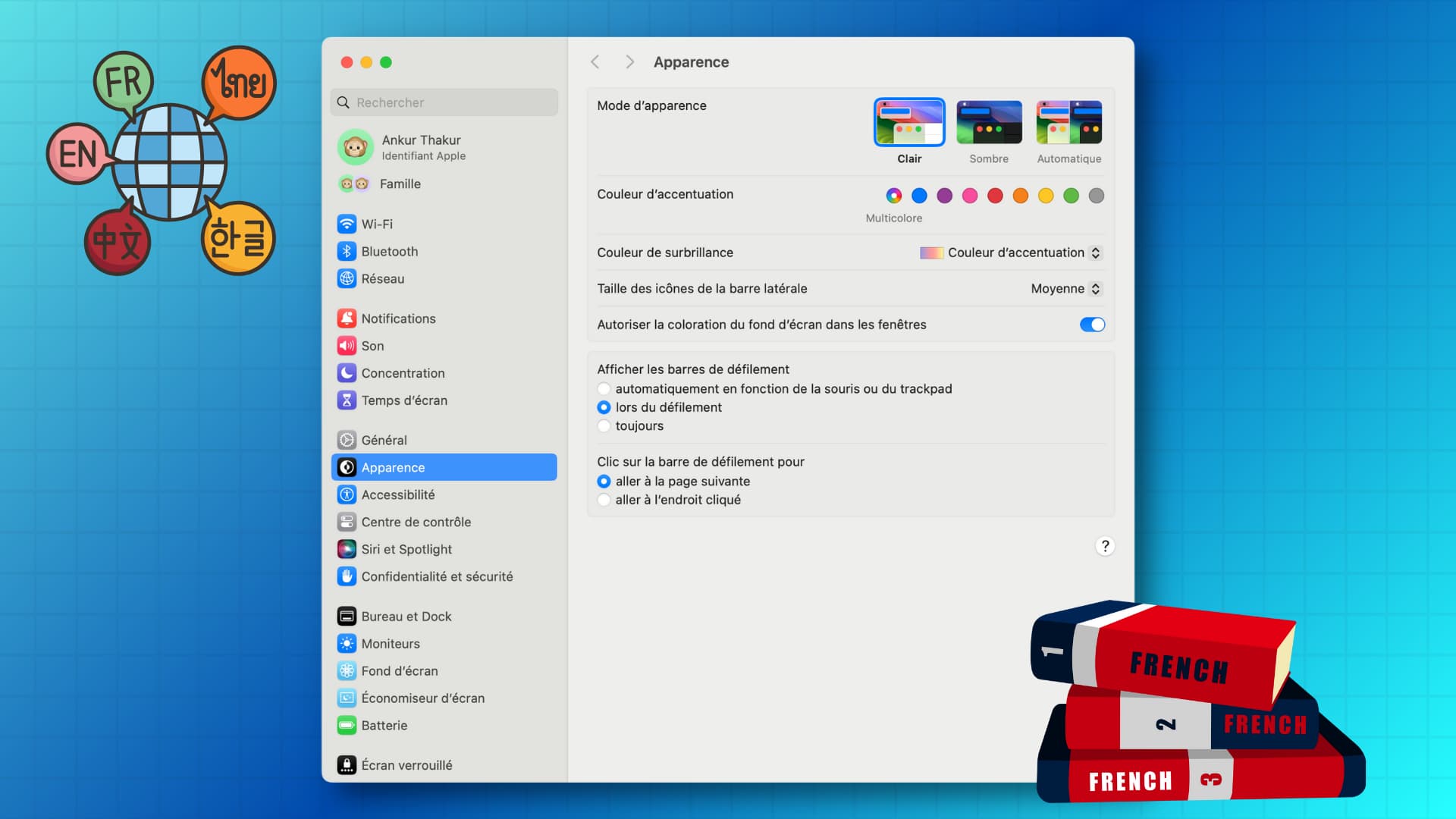
Choosing the systemwide language is among the steps during macOS setup as the menus, buttons, built-in apps and other aspects of the Mac operating system are localized in multiple languages. You can set the macOS language separately of your keyboard language.
Customizing the system and keyboard locales is also helpful when sharing your Mac with family or friends who may be more comfortable navigating macOS in their local language instead of what you use.
Change the systemwide language in macOS
Follow these tips to change the macOS language, which will also change your keyboard language.
1) Open System Settings and navigate to General > Language & Region.
2) The current system language is shown at the top. To add a new language, click the plus button (+). With multiple languages added, the topmost one is your default.
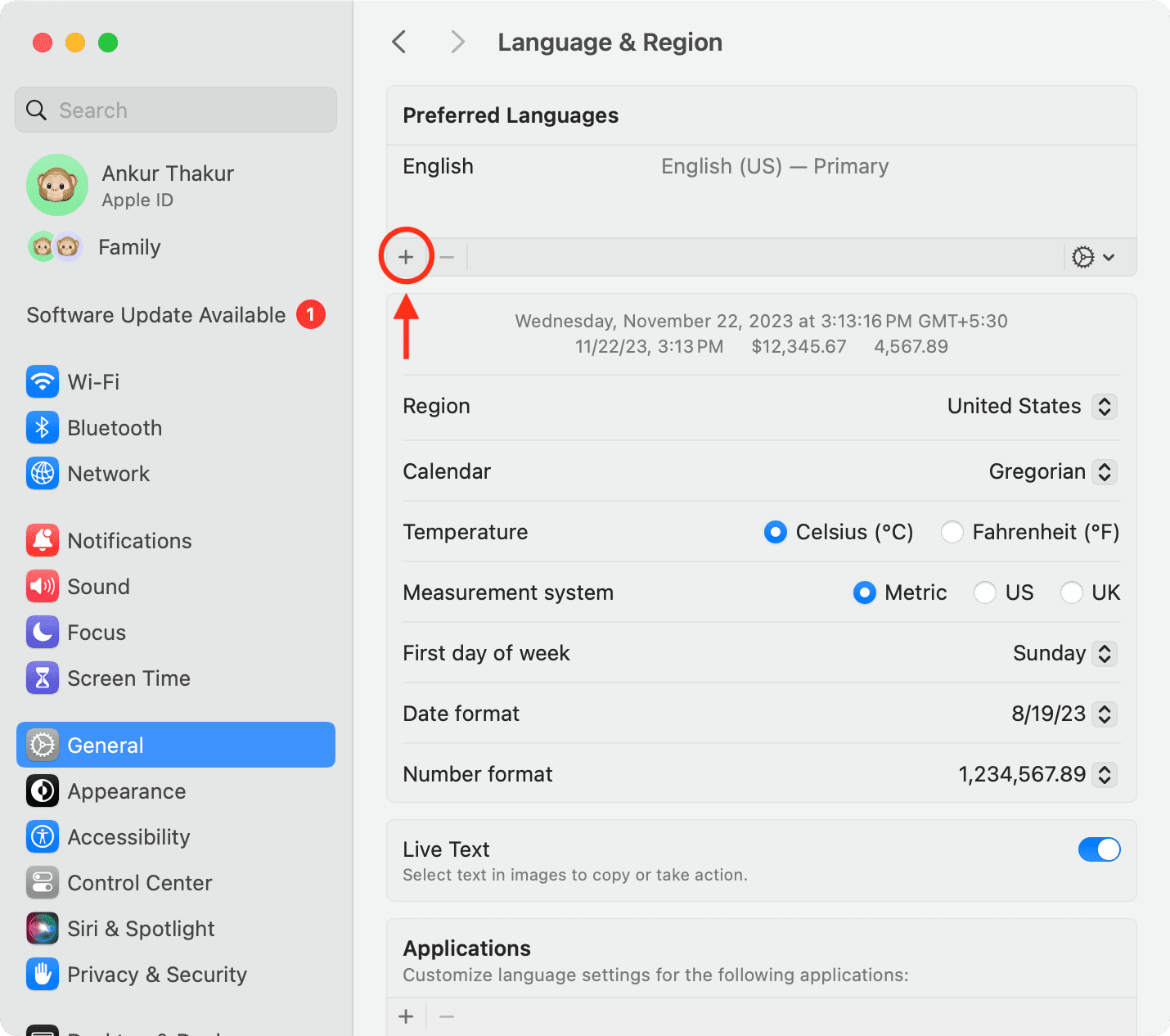
3) Pick a language from the list, then hit Add.
4) Click the blue Use [language name] button in the confirmation popup.
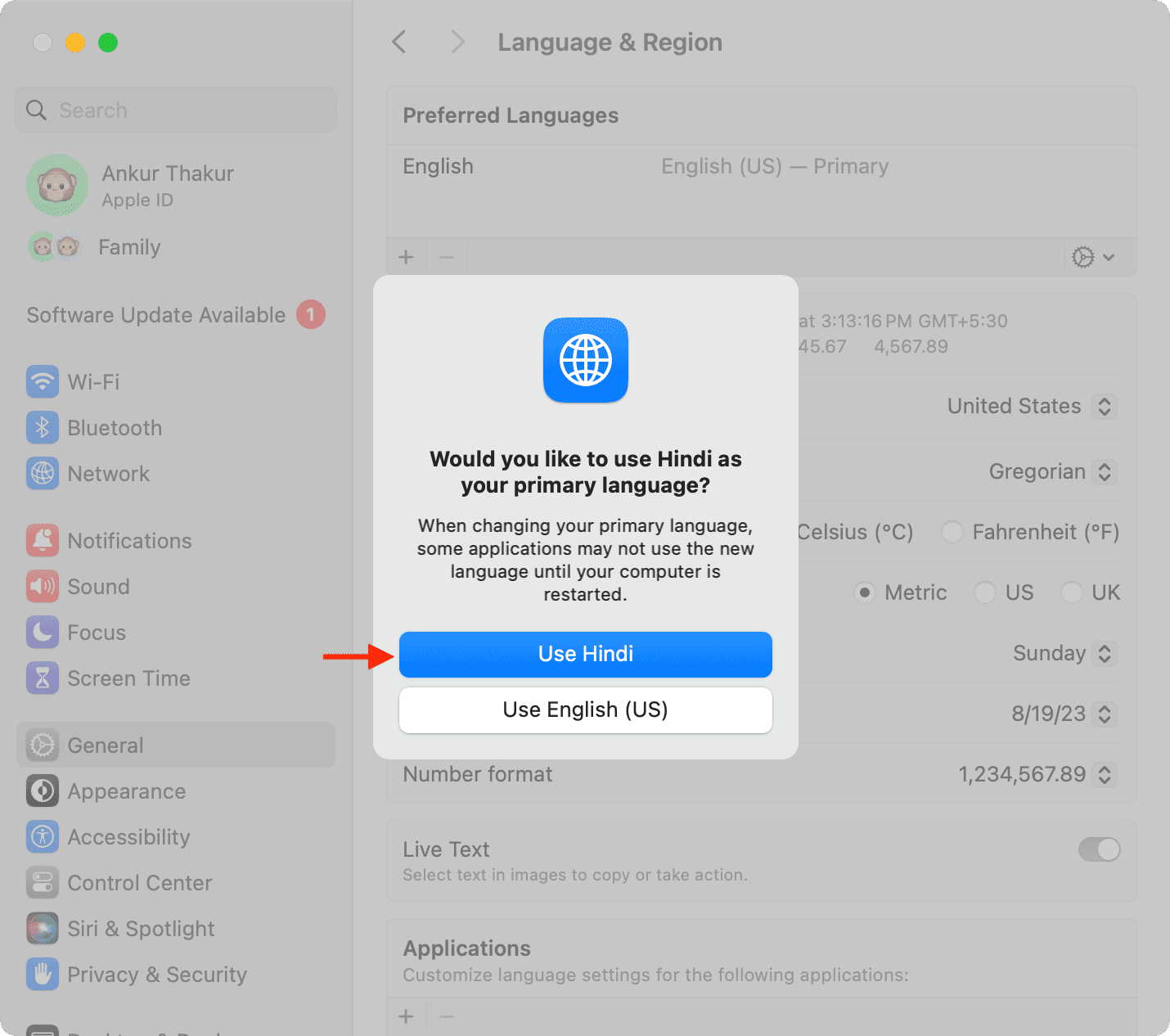
5) macOS needs to restart to switch to a new system locale, so click the Restart Now button or restart manually later.
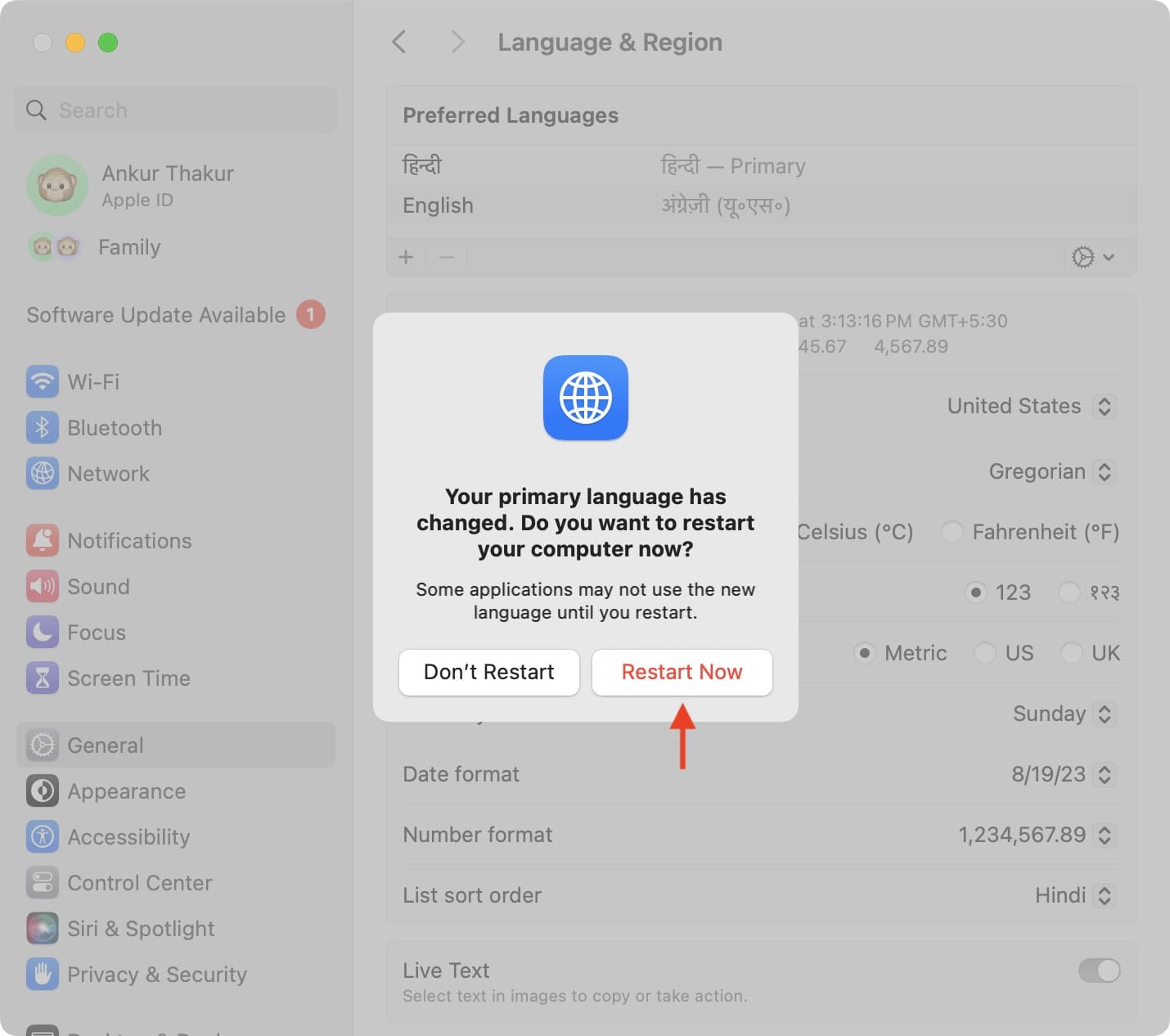
6) Optionally, delete the previous system language by selecting it in the System Settings app and clicking the minus button. If you’d like to set this language as the default for the macOS login window, click the gear icon in the bottom-right corner.
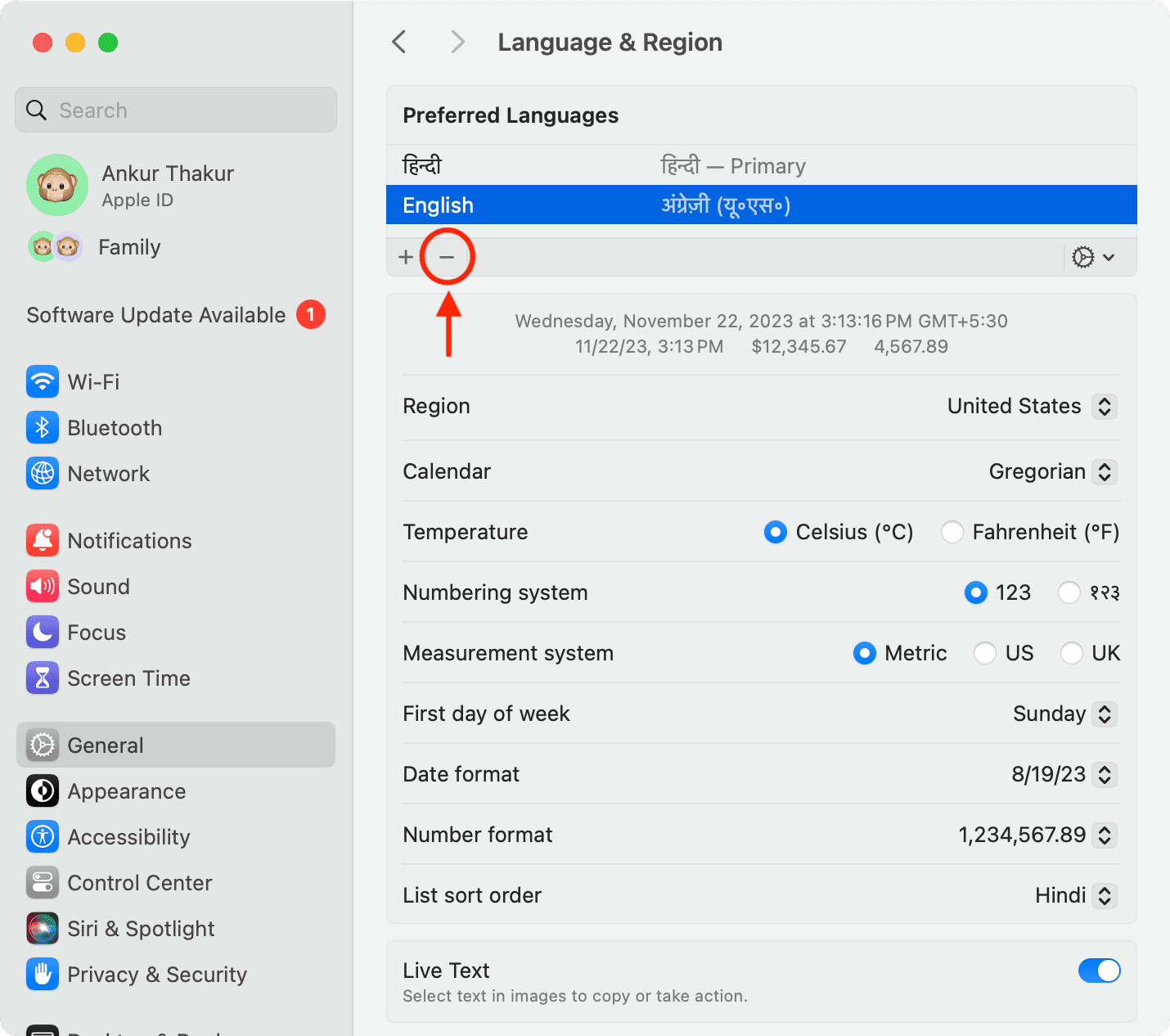
Change the language for specific apps
macOS permits you to adjust per-app language without changing your macOS language. This enables you to, say, navigate macOS localized in German while using a few apps in a different language.
System Settings
1) Open System Settings and navigate to General > Language & Region.
2) Click the plus button in the Applications section at the bottom to customize per-app languages.
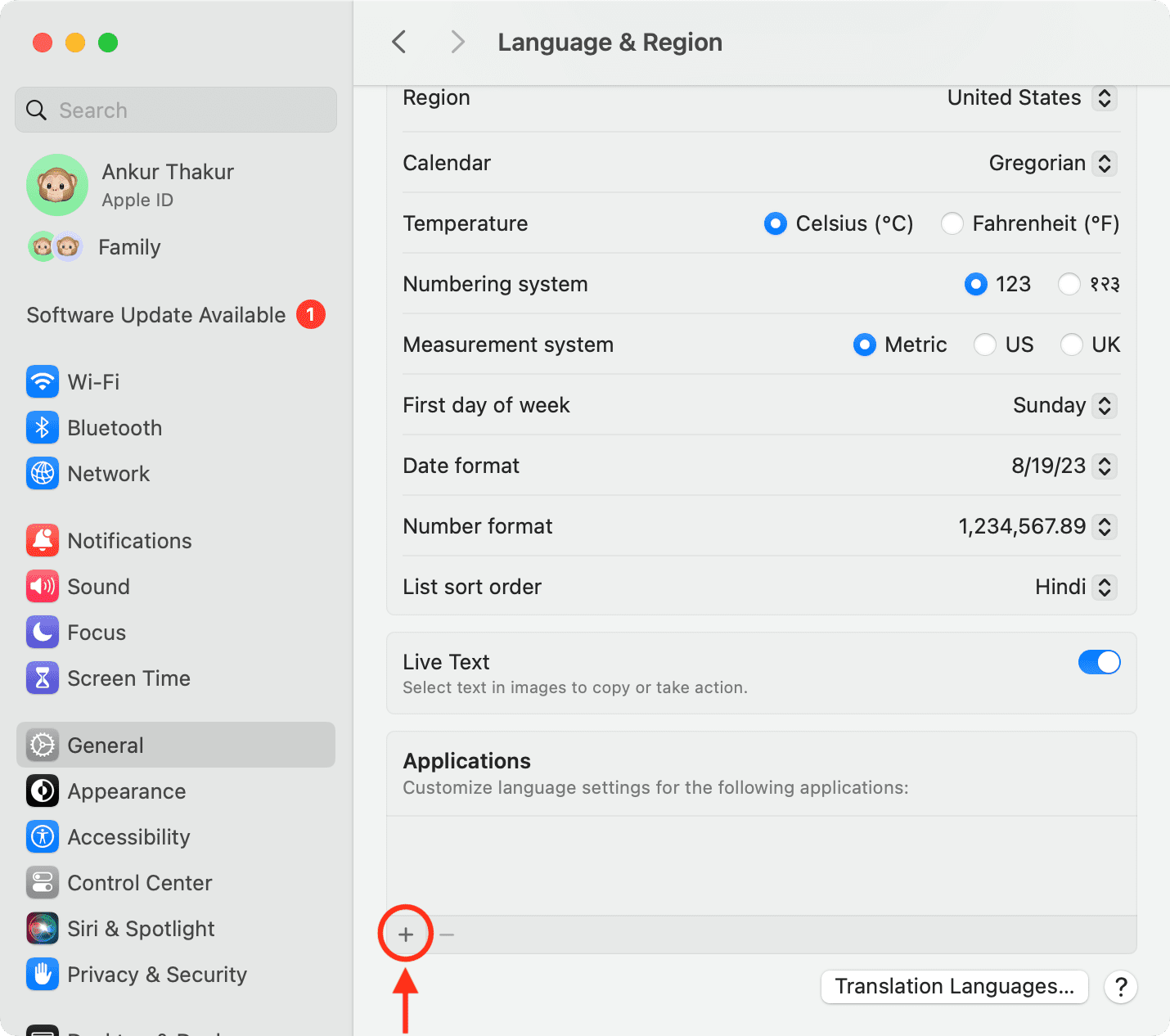
3) Click the menu next to Application to choose an app.
4) Hit the Language menu and pick a desired language for this app.
5) Lastly, hit Add. You may need to quit and relaunch the app for the new language to come into effect.
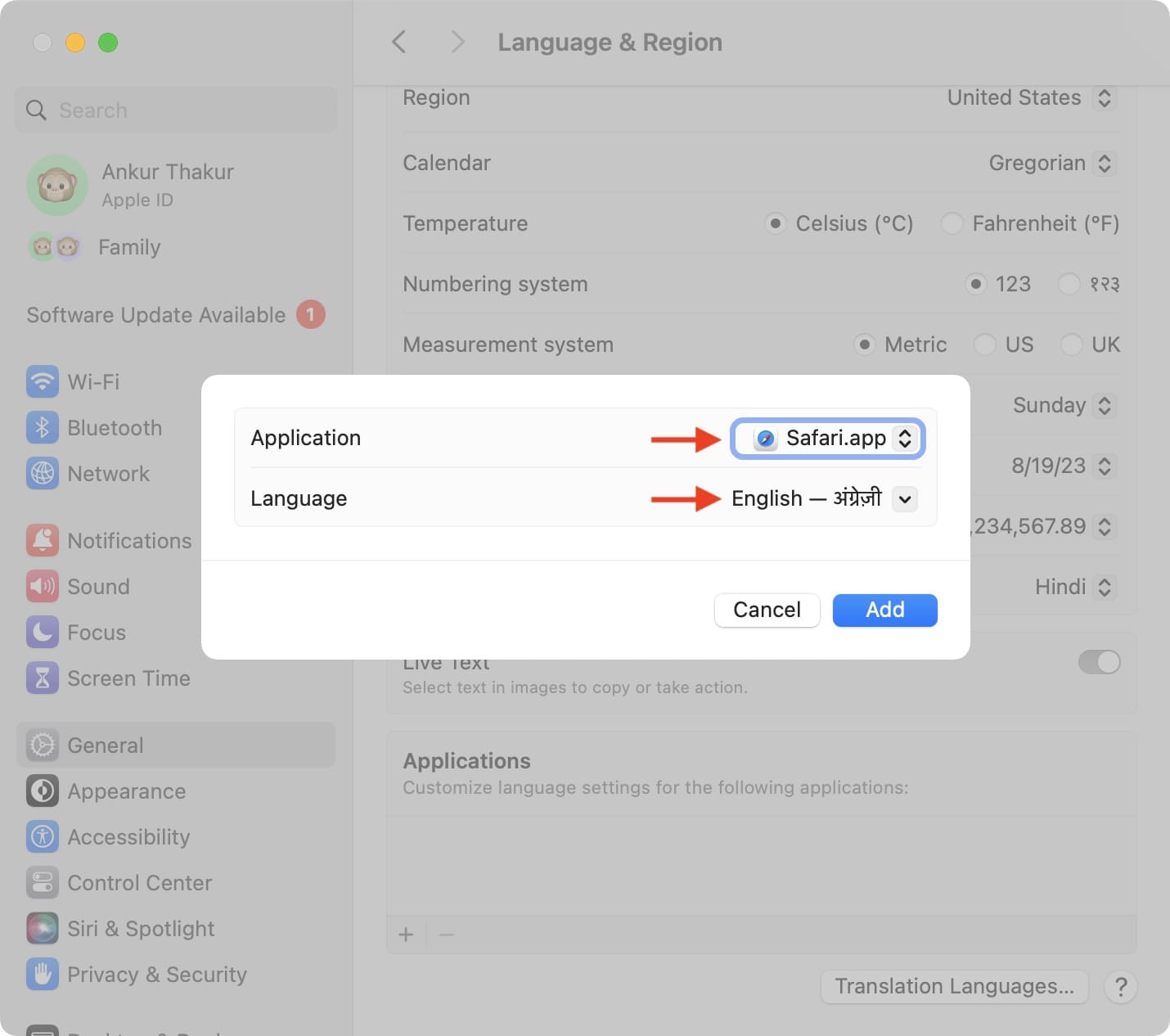
In-app settings
Some apps offer a language option inside their settings. Open a desired app and press the Command + Comma (,) keys or click the app name in the menu (next to the Apple logo) and choose Settings. Explore the various options in the in-app settings to find options related to app language. If there is a search box, type language to find the setting quickly.
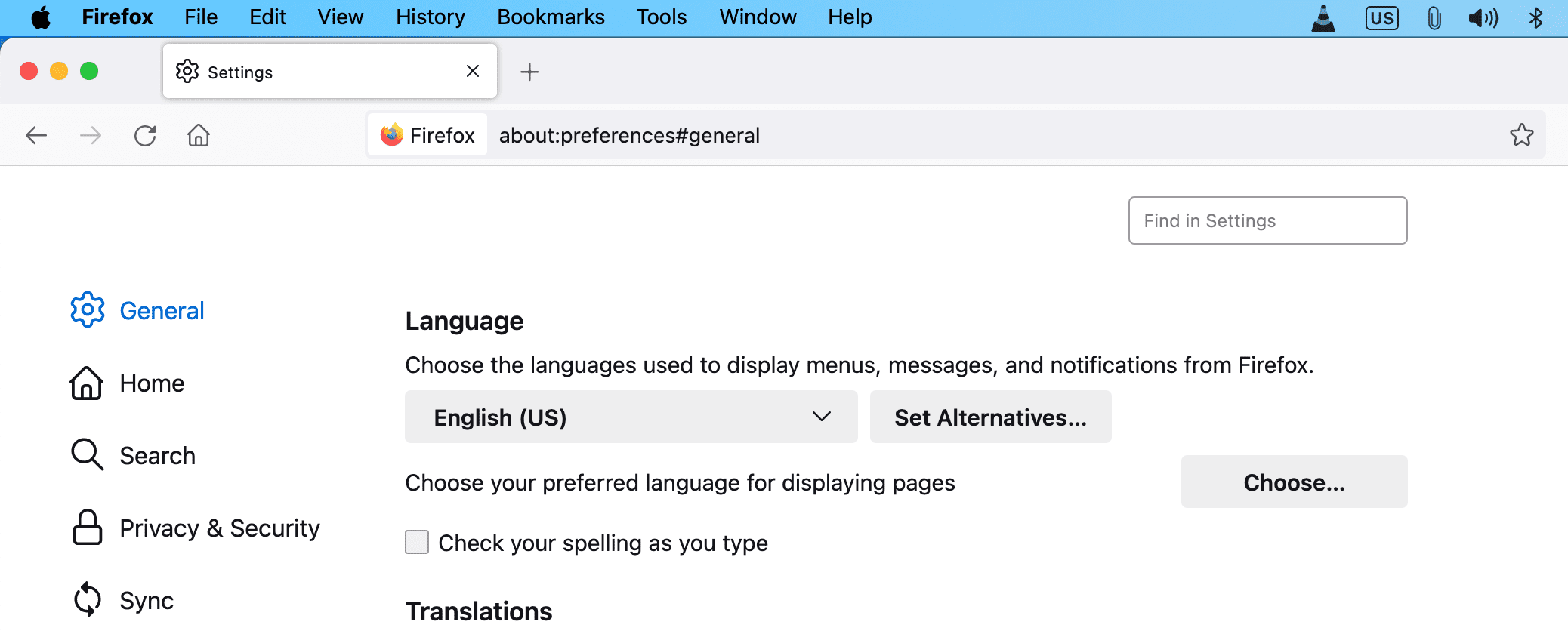
Add new macOS keyboard languages
You can add keyboard languages for typing without changing the macOS language. For instance, you may want to use macOS in English, but type in both English and Spanish. But first, you must actually add a Spanish keyboard before you can use it.
1) Launch System Settings and select Keyboard.
2) Click Edit next to Input Sources.
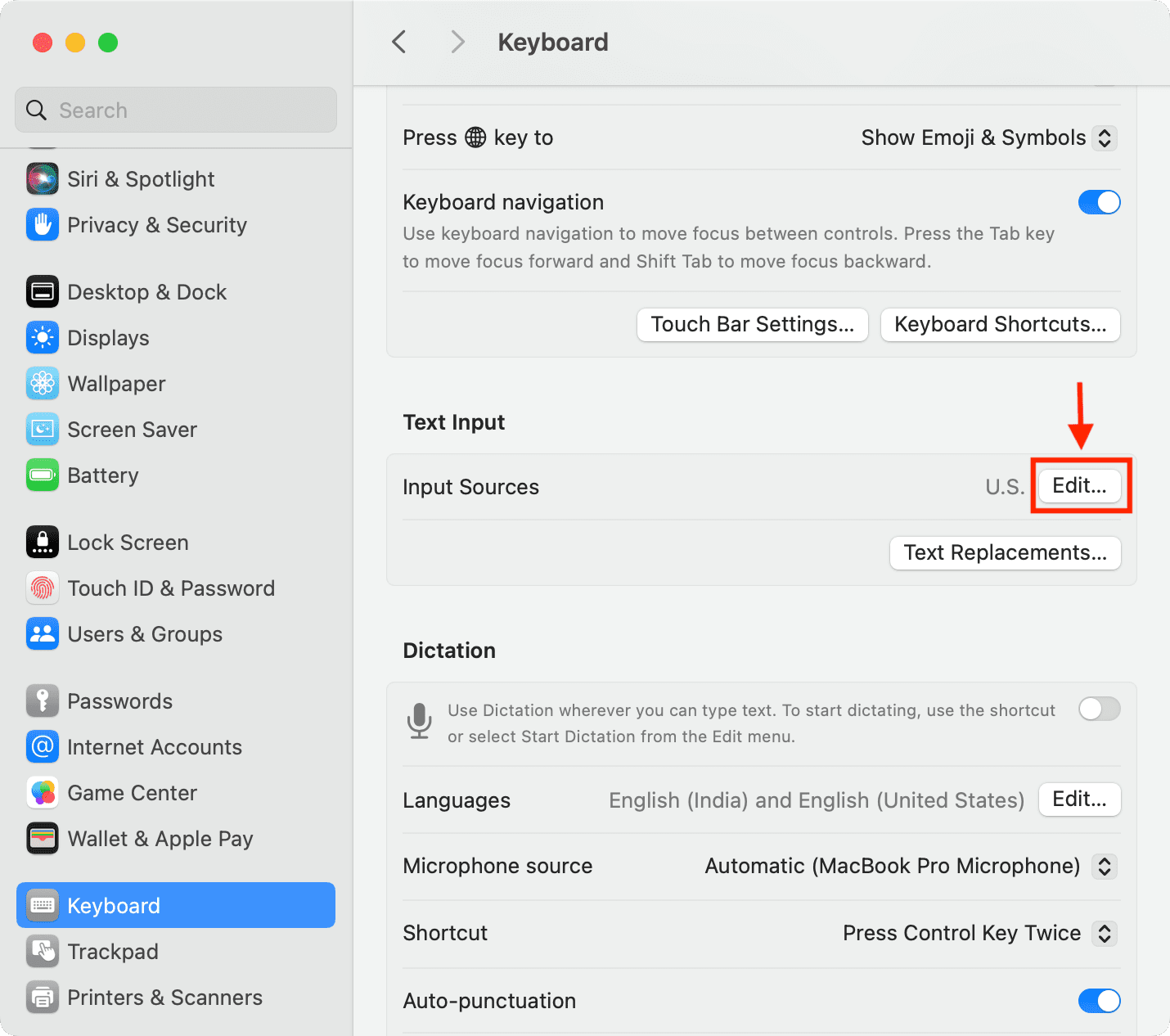
3) Click the plus button in the bottom-left corner.
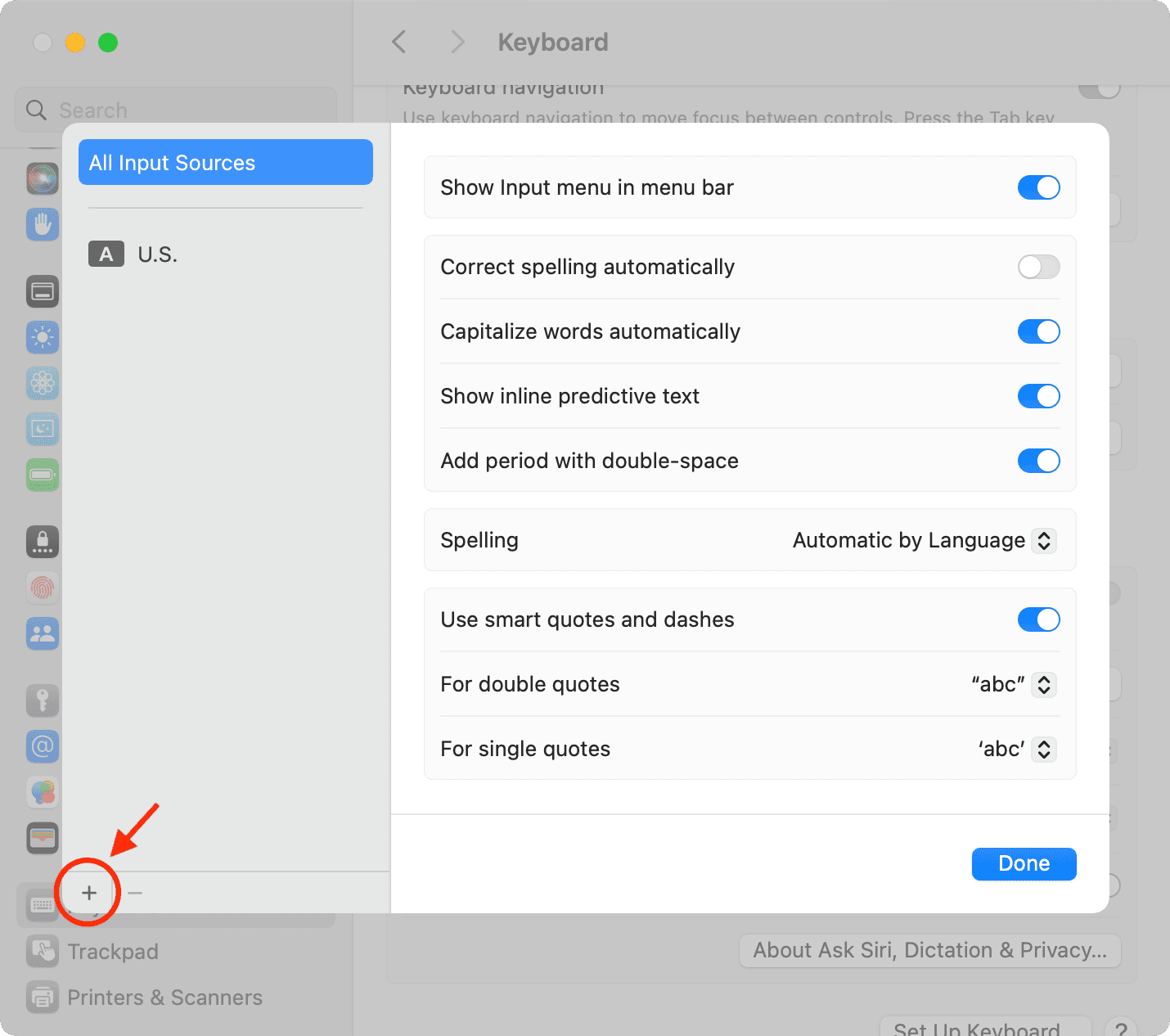
4) Choose a keyboard language, pick a layout, and hit the Add button.
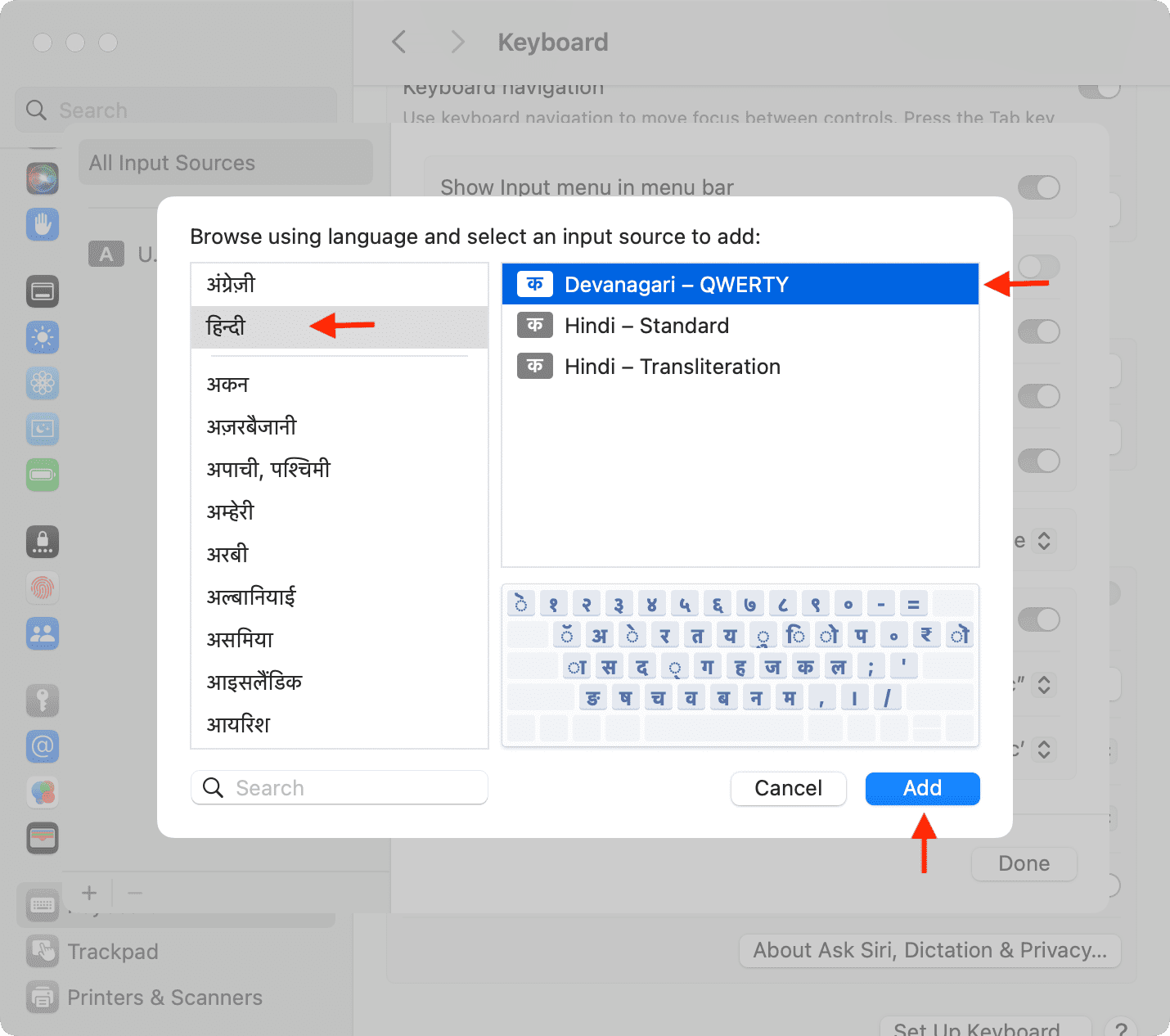
5) To remove keyboard languages you no longer need, use the minus button. Keep in mind that you’ll need to have at least two keyboard languages for multilingual typing. Feel free to explore the various settings on this screen to streamline your typing, but don’t turn off the “Show Input menu in menu bar” option.
6) Hit the Done button to save the changes.
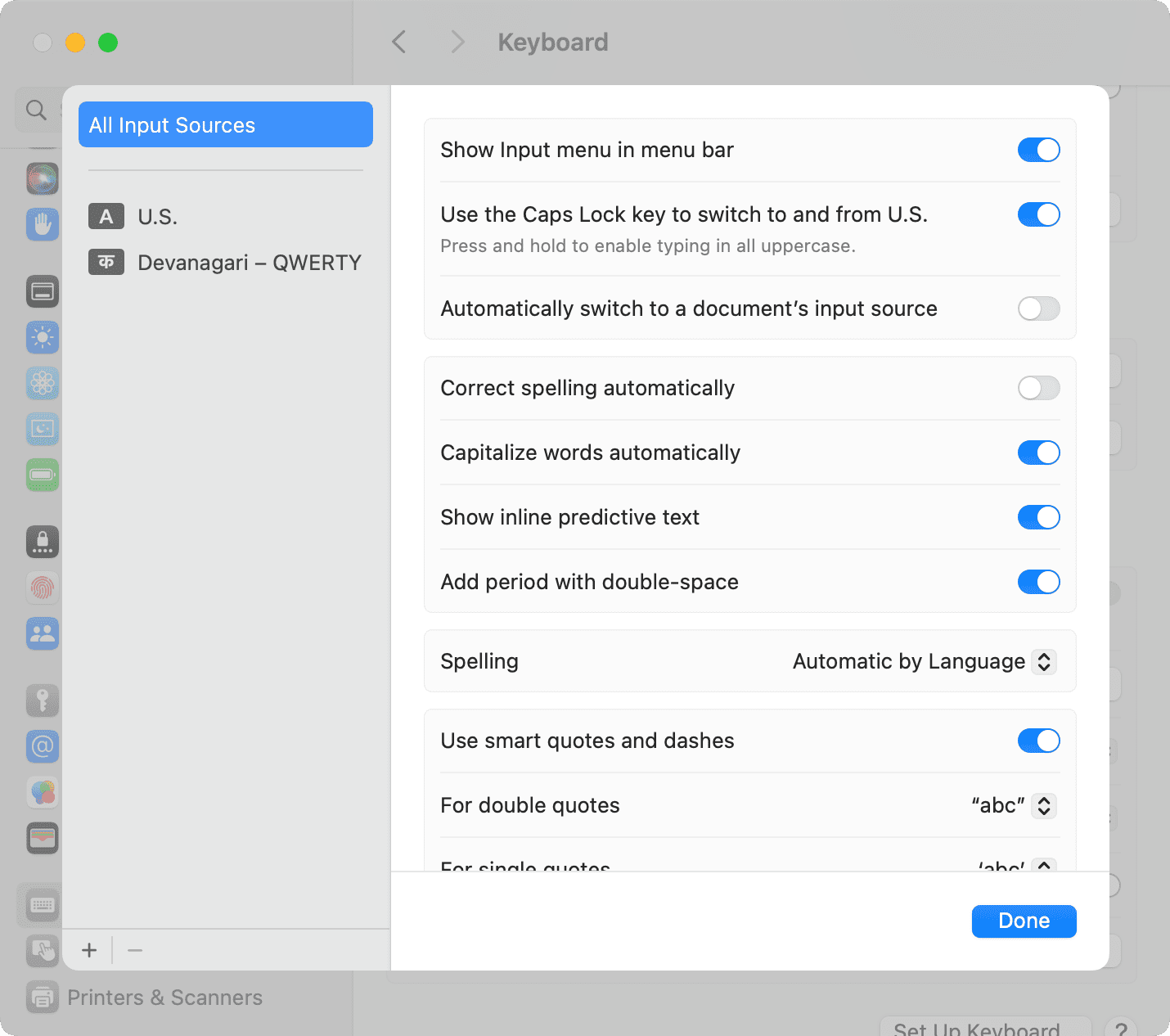
Change your keyboard language on the fly
With at least two keyboard languages added, you can switch between them via the input menu button in the menu bar which shows the current keyboard language. You can also explore other ways to switch between languages when writing.
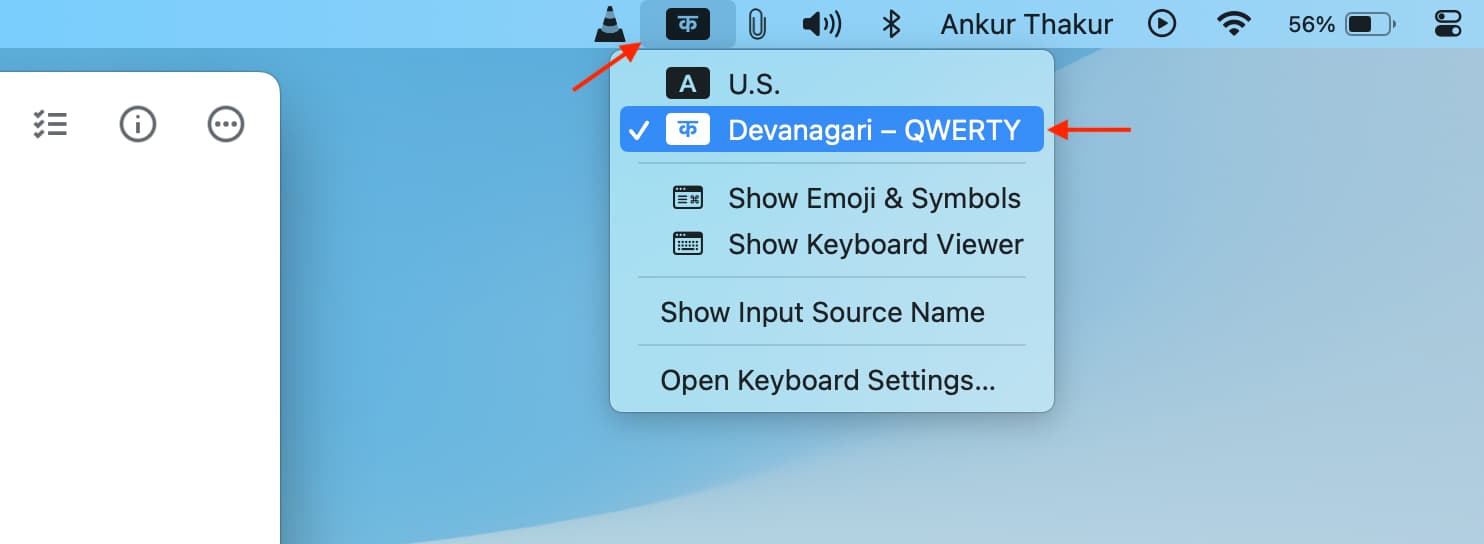
Check the keyboard layout with Keyboard Viewer
Key labels on physical keyboards are fixed in place, unlike the iPhone’s onscreen keyboard which is optimized for easy multilingual typing. With a help from the built-in Keyboard Viewer, you can see which keys on the physical keyboard correspond to what letters and symbols of the selected language layout. To invoke Keyboard Viewer, click the input menu button in the menu bar and choose Show Keyboard Viewer.
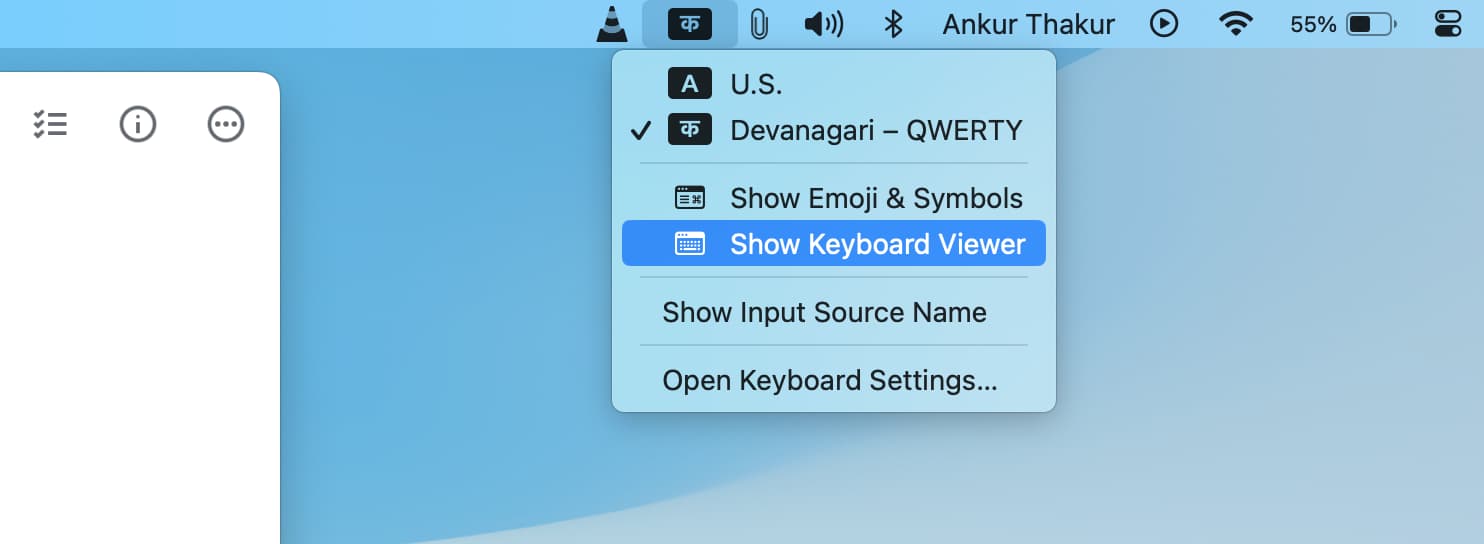
As an example, the key next to the left Shift key on my MacBook keyboard is reserved for the letter Z. But when I switch to the Hindi keyboard, Keyboard Viewer shows that pressing the Z key will actually type the Hindi character ( ङ ). Similarly, pressing the Z key while holding Shift will enter this symbol ( ँ ), which is an important part Hindi alphabet.
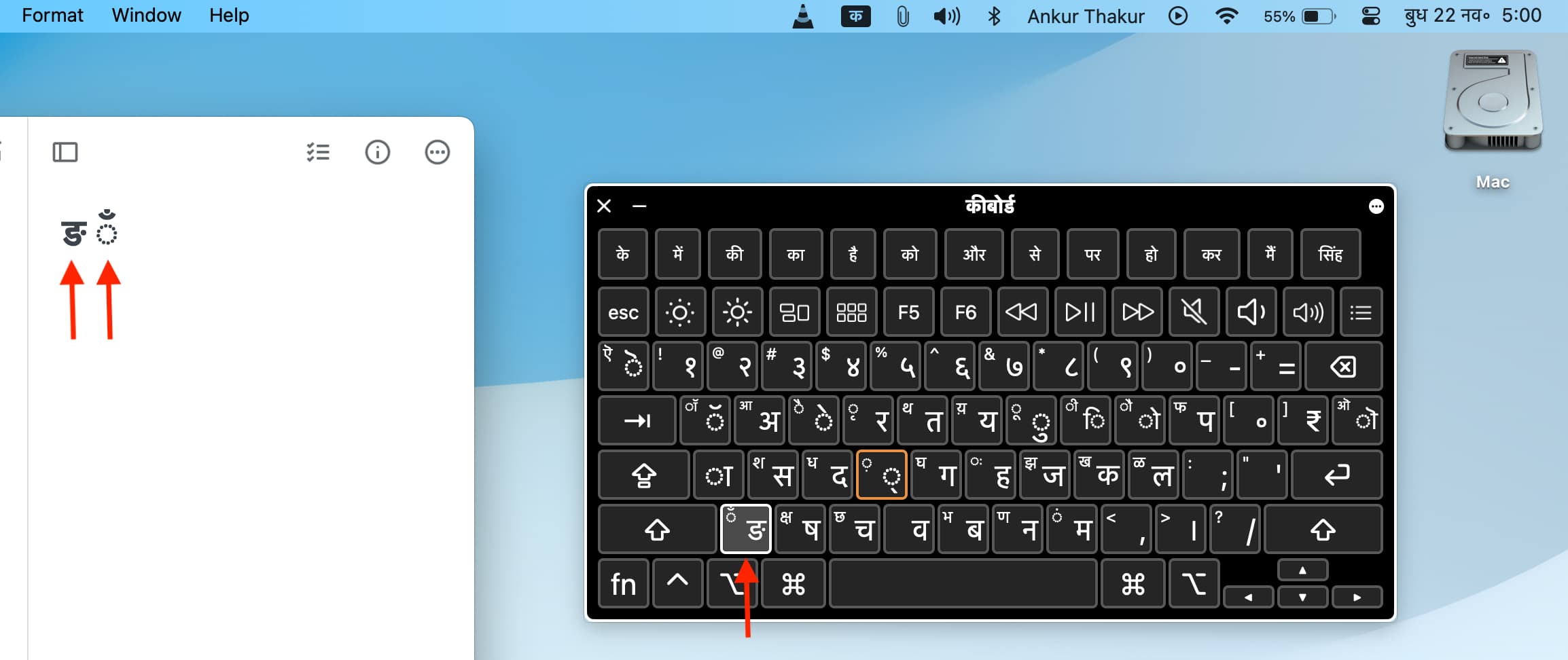
Keyboard Viewer may also display word suggestions as you’re typing, which you can click to insert into your text. To adjust the Keyboard Viewer settings, click the ellipsis icon in the top-right corner. To close or minimize the app, hit the buttons in the window’s top-left corner.
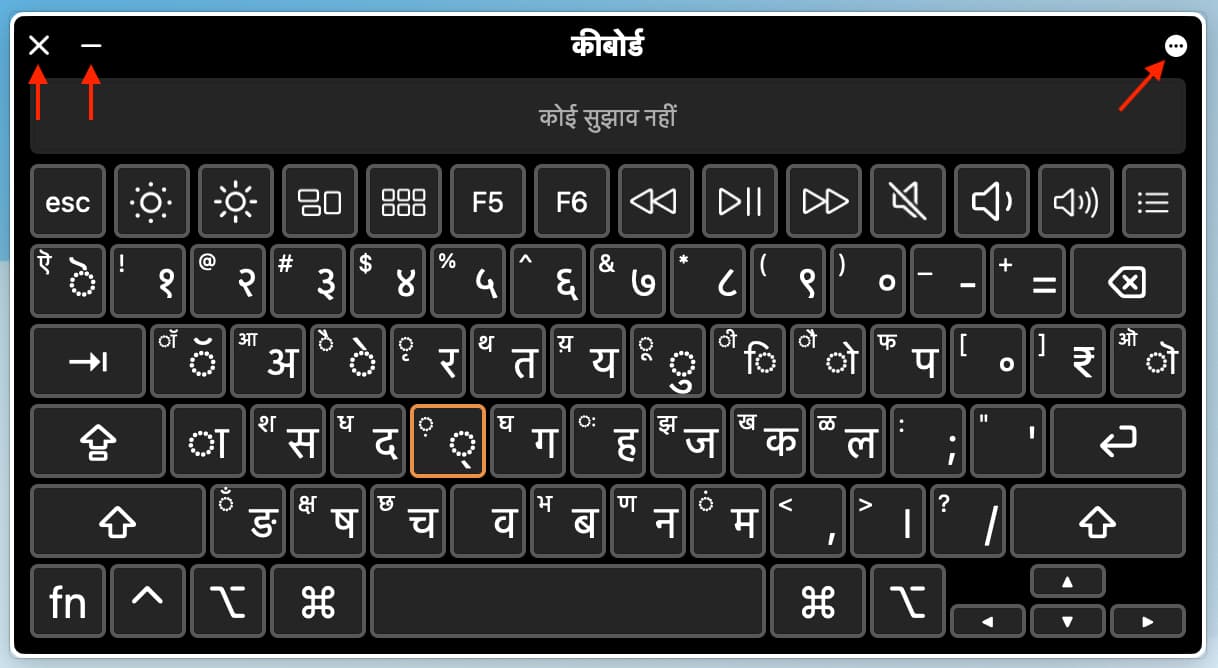
On a related note: